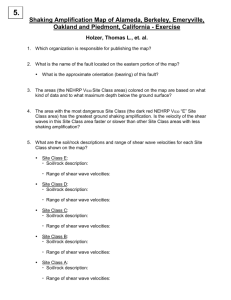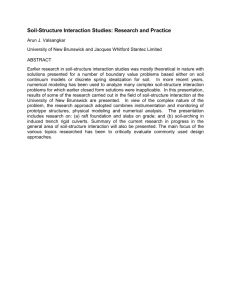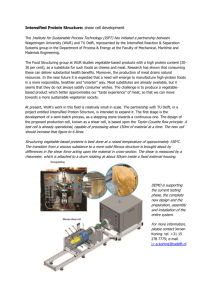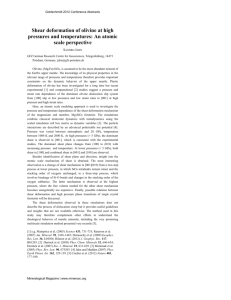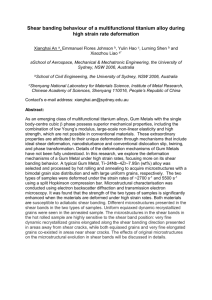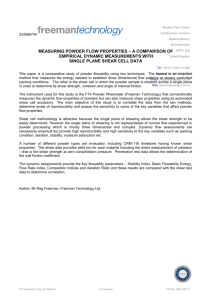M2 : Génie Civil Géo-mécanique : Ouvrages, Eau, Réservoirs
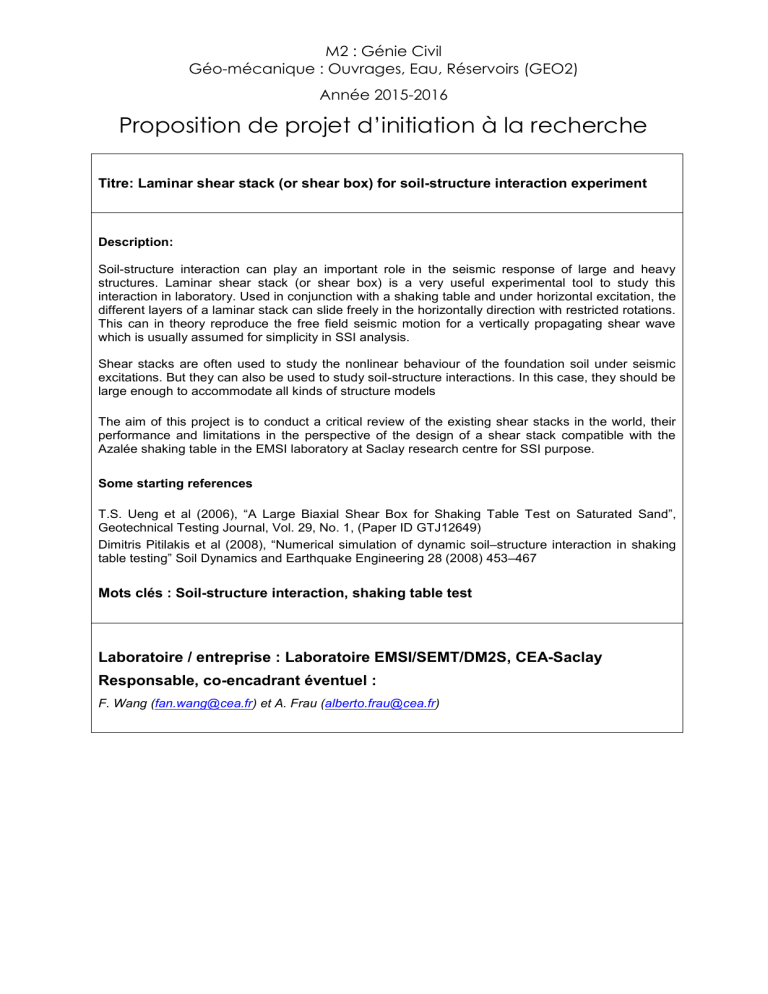
M2 : Génie Civil
Géo-mécanique : Ouvrages, Eau, Réservoirs (GEO2)
Année 2015-2016
Proposition de projet d’initiation à la recherche
Titre: Laminar shear stack (or shear box) for soil-structure interaction experiment
Description:
Soil-structure interaction can play an important role in the seismic response of large and heavy structures. Laminar shear stack (or shear box) is a very useful experimental tool to study this interaction in laboratory. Used in conjunction with a shaking table and under horizontal excitation, the different layers of a laminar stack can slide freely in the horizontally direction with restricted rotations.
This can in theory reproduce the free field seismic motion for a vertically propagating shear wave which is usually assumed for simplicity in SSI analysis.
Shear stacks are often used to study the nonlinear behaviour of the foundation soil under seismic excitations. But they can also be used to study soil-structure interactions. In this case, they should be large enough to accommodate all kinds of structure models
The aim of this project is to conduct a critical review of the existing shear stacks in the world, their performance and limitations in the perspective of the design of a shear stack compatible with the
Azalée shaking table in the EMSI laboratory at Saclay research centre for SSI purpose.
Some starting references
T.S. Ueng et al (2006), “A Large Biaxial Shear Box for Shaking Table Test on Saturated Sand”,
Geotechnical Testing Journal, Vol. 29, No. 1, (Paper ID GTJ12649)
Dimitris Pitilakis et al (2008), “Numerical simulation of dynamic soil–structure interaction in shaking table testing ” Soil Dynamics and Earthquake Engineering 28 (2008) 453–467
Mots clés : Soil-structure interaction, shaking table test
Laboratoire / entreprise : Laboratoire EMSI/SEMT/DM2S, CEA-Saclay
Responsable, coencadrant éventuel :
F. Wang ( fan.wang@cea.fr
) et A. Frau ( alberto.frau@cea.fr
)

